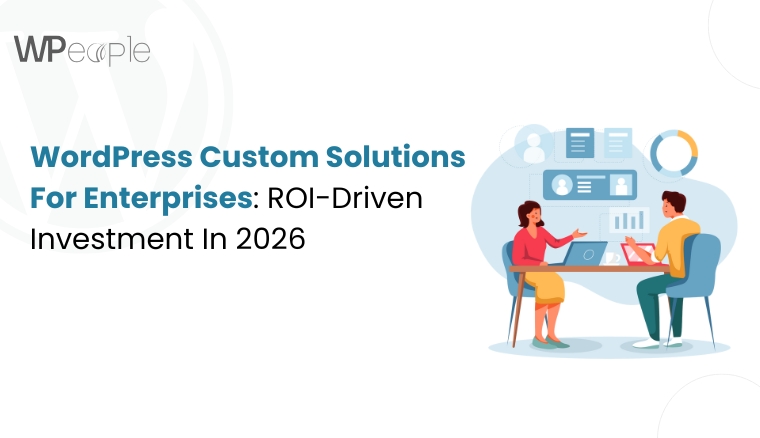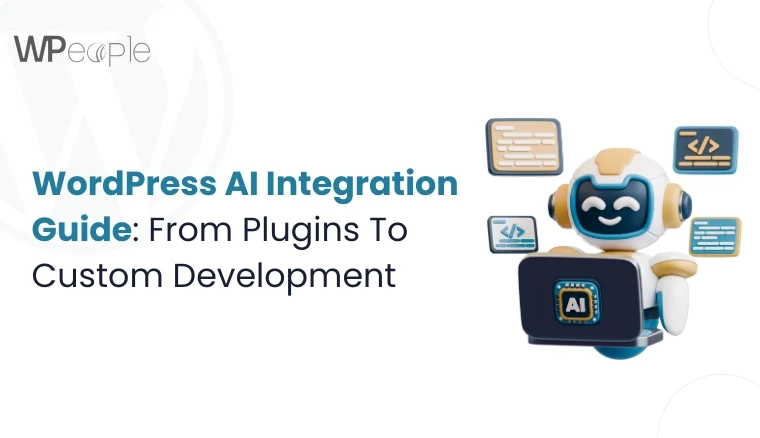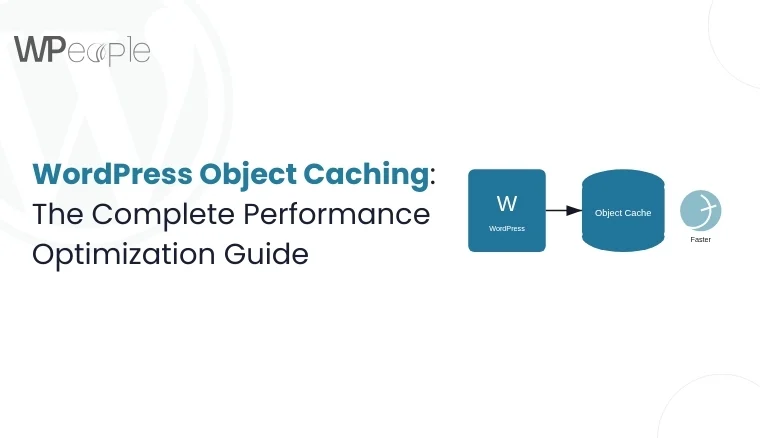
Introduction
Headless WordPress Development is relatively a new concept in web designing which is widely practiced these days. This groundbreaking idea isolates the back-end operations of WordPress from the front-end page layout and design, so different technologies may be used to construct a site’s back end and its front end. In other words, it separates the CMS from the front end.
Hence, one cannot underestimate the significance of Headless WordPress Development in the contemporary context of web design. It provides unprecedented flexibility and paves the way to virtually unlimited possibilities to develop communicative, engaging, and extremely effective websites. Due to modern frontend frameworks such as React and GraphQL, developers have the opportunity to implement individual interfaces and optimize for WordPress security.
This article will focus on elaborating the subject of the Headless WordPress Development process, including advantages and disadvantages, and further prospects in the sphere of web design. After that, we will describe what headless WordPress means and how it is different from a regular WP website, and reveal the benefits of implementing the headless architecture in development, as well as the pains a programmer can face during the process. We will also continue the discussion to reflect on the likelihood that Headless WordPress Development will become the standard in website design.
Key areas covered in this article include:
Understanding Headless WordPress Development: Describing how it works and the configured technologies.
Pros and Cons of Embracing Headless WordPress Development:
Summarizing the strengths and the weaknesses of the prevention plans. The Future Potential for Headless WordPress Development in the Web Design Industry: To consider how it fits the context of more recent methods, Ono and Pettigrew (2012) conducted a study.
Considering the Challenges and Looking Ahead: Issues that have to be taken into consideration by businesses and developers in order to assess if this is suitable for their venture.
At the end of this article you will have comprehensively learned about Headless WordPress Development and possible benefits that come with it in future more enhanced web designs. Let’s get started!
Headless V/s Traditional WordPress
WordPress, the popular content management system, now offers two distinct approaches: conventional and decapod. In terms of realities, there are two types of institutions to consider; traditional and headless. Whereas, the conventional WordPress, the content management and the presentation are delivered on a single platform, the headless WordPress divides the back end from the front end, meaning that new possibilities are made available to developers and businessmen.
1. Traditional WordPress:
- All-in-one solution: backend which is Content Management System and frontend that has a presentation layout integrated
- User-friendly interface
- Large numbers of themes and plugins
- Well-known to most of the people installing and working on the programs.
- Those around frontend technologies have little freedom to choose what to do.
2. Headless WordPress:
- Decoupled architecture: backend CMS being different from the frontend.
- It should be noted that these products use WordPress just as the content storage space.
- Frontends may also be developed using contemporary technologies such as React, Vue, js and so on.
- More freedom and personalization possibilities
- Possibility of better results and protection
3. Key Differences:
- Development approach
- Technology stack
- Customization capabilities
- Learning curve
6. Considerations for Choosing:
- Project requirements
- Development team expertise
- Budget constraints
- This is or also commonly known as the desired degree of tailoring which indicates the amount of personalization expected from the realisation process of a product.
- Long-term scalability needs
Understanding Headless WordPress Development
Now in this particular segment of the analysis, we will be defining what Headless WordPress Development is and how it is done. We’ll cover the following topics:
The difference between Headless WordPress Development and traditional websites
Below are the advantages that are associated with the implementation of a headless architecture to web projects:
The Specifications of Headless WordPress Development
The rationale for having a neat attitude toward headless projects in terms of using Git.
How does Headless WordPress Development Differ from Traditional Websites?
WordPress website architectures are combined setups that involve backend and frontend that is composed of themes and templates.
Headless WordPress removes one aspect of the WordPress framework – the backend and lets you build the user interface part however you want.
Benefits of Using a Headless Architecture for Web Projects
Flexibility: The presentation layer can be implemented with any frontend stack or technology as the developers do not have to stick to the choice of WordPress themes and templates.
Improved Performance: In case the backend operations are separated from the frontend, the static files will have a higher chance of directly serving users => faster load times.
Scalability: Headless approach enables flexibility to add or expand the front-end or back end of a system depending on an organization’s needs.
The Technologies Used in Headless WordPress Development
React: A well-known framework that is written in JavaScript language and designated to create builds interfaces. It makes the creation of multi-interactive UI components easy for the developer to implement.
GraphQL: Basically, it can be referred to as a query language for APIs that allows for the more effective pulling of data and as a viable substitute to the conventional REST API.
Importance of Proper Git Workflow in Managing Headless Projects
Therefore, learning the concept of version control will ensure an effective headless project implementation.
A proper Git workflow aims to assist developers with the patterns of working together, proper tracking of changes, and taking care of code health during a project’s life cycle.
Advantages of adopting a Headless approach with WordPress:
Improved Performance: This means that headless WordPress sites’ front-end can produce content at a faster rate than their back-end, which equals ‘faster content delivery’ or a better user experience.
Flexibility: While headless architecture enables front-end developers to pick any of the front-end technologies or front-end frameworks, which is also one of the significant advantages of headless architecture over WordPress themes due to the complete freedom regarding design choices.
Potential drawbacks to consider:
Challenges in Customizing Template Files: Customisation of template files also becomes slightly harder due to the fact that with monolithic WordPress sites, there is a clear separation of the front-end and the back-end. This can cause some challenges when it comes to the general look and feel of the application as well as its ease of usage.
Using PHP Template Tags: The reason is that headless WordPress implies implementing different front-end technologies and using the PHP template tags typical for WordPress themes may turn into cumbersome and need extra low-level workarounds.
Top 5 Headless WordPress Providers
Here are the leading headless WordPress providers that offer robust solutions for decoupling the frontend and backend, ensuring superior performance and flexibility for your website. Explore our top 5 picks in the table below to find the perfect fit for your headless CMS needs.
| Aspects | WPeople | WP Engine | Static | Pantheon | WordPress.com VIP |
| Overview | Serverless static site generator for WordPress | Managed WordPress hosting and headless CMS platform | Static site generator for WordPress | Enterprise-grade WordPress hosting with headless capabilities | High-end managed WordPress hosting for enterprises |
| Pricing | Starts at $25/month | Starts at $25/month | Starts at $35/month | Custom pricing | Custom pricing |
| Performance | Fast and secure static sites | High-speed, scalable | Ultra-fast static sites | High performance, scalable | Top-tier performance and scalability |
| Ease of Use | Easy setup and management | User-friendly interface | Simple static site creation | Advanced, may require technical knowledge | Advanced, tailored support |
| Support | 24/7 support | 24/7 support | Email and chat support | 24/7 support | Dedicated support team |
| Features | Custom CDN, automated updates, high security, Automated site generation, secure | Custom CDN, automated updates, high security | Automated static site builds, secure | Advanced caching, CI/CD workflows | Customizable, robust API |
| Integrations | Limited integrations | Wide range of plugins and APIs | Limited integrations | Extensive integration options | Extensive integration options |
| Scalability | Suitable for small to medium sites | Highly scalable | Suitable for small to medium sites | Highly scalable | Highly scalable |
| Security | Secure static sites | Strong security features | Secure static sites | Enterprise-grade security | Enterprise-grade security |
| Customization | Limited customization | Highly customizable | Limited customization | Highly customizable | Highly customizable |
Using Headless WordPress and tools like Gatsby to create fast, static websites:
Static site generation offers numerous benefits for headless WordPress development, including Static site generation offers numerous benefits for headless WordPress development, including:
Enhanced Security: Because static sites do not require inputs from the user or consist of applications, they are safer than dynamic sites and with fewer risks for security breaches.
Improved Performance: This is because pre-built static pages can be deployed to users without being processed by a server hence making them faster.
SEO Advantages: Search engine bots can easily crawl through static sites which means that good ranking in a search engine may be attained.
In conjunction with headless WordPress using tools such as Gatsby, the static site generation will be able to leverage on the possibilities of the two models making for a formidable web design platform.
The Future Potential for Headless WordPress Development in the Web Design Industry
Is Headless WordPress Development the Future of Web Design?
Everything concerning Web Design and Development must be considered with regards to how Headless WordPress Development is going to be. Taking into consideration the analyzed state of the CMS market and the changes currently in this sphere, interest in Headless WordPress Development speaks for understanding this concept as the predominant method of work in web design.
Understanding the Shift in Web Design
As the number of organizations adopting decoupled architectures is on the rise together with the client’s demand on omnichannel experiences, headless CMS becomes even more relevant. Headless WordPress means that the advantages of the WP CMS can be used as the back end with modern front-end solutions as the front end.
Comparing Different Approaches
In terms of future outlook of Headless WordPress Development, one must compare it with other Horizon-like API first approaches. Compared to API-first systems, Headless WordPress is as flexible and decoupled but has a favourable interface and multitude of plugins and extensions.
Unique Benefits and Applications
The future prospects of Headless WordPress Development can be seen in the specific advantages and numerous uses. Thus, developers are free to try out new technologies for the application’s back end, to integrate with other services and deliver blazing fast performance to the customers across platforms.
Here are some key strengths and use cases of Headless WordPress Development:
Flexibility: Front-end interfaces can be also developed by applying the best tools for that, for example React. js or Angular. js, all the while not being constrained by wordpress themes.
Scalability: In other words, when deploying headless solutions, the websites are more capable of dealing with large traffic volumes, thereby rendering optimal results during peak usage.
Integration: It is also easy for business people to integrate the word press site with other services like business management platforms, marketing automation among others.
Speed: It is still possible to make the headless websites faster through the front-end code optimization that minimizes the number of requests to the server.
Future-proofing: In the contemporary environment, it is easy to upgrade the front-end stack while retaining WordPress since it is not necessary to transfer data from WordPress.
The Significance of Headless WordPress Development
Fast growing trend that is aspiring to take a stand in the future of web design is the Headless WordPress Development. The fact that it is at once capable of providing backend power and frontal innovation is a major advantage that can be of great help to businesses that need to shift to the newer CMS trends and market conditions.
By embracing this forward-thinking approach, businesses can:
Drive Growth: Discover new ways of moving online by designing, developing and launching exciting digital propositions that differentiate from the competition.
Enhance Agility: To change requirements such as the market condition or customers’ demand, modification can easily be made to the front-end without having to alter the back-end.
Improve User Experience: Having first-time contiguously integrated and consistent experiences at various touch points or channels that improve customer satisfaction and retention.
When we define further the idea behind the Headless WordPress Development, it is possible to conclude that indeed this concept still has a great potential to give the impulse to the further evolution of the web design in the future.
Considering the Challenges and Looking Ahead
Using Headless WordPress Development could be a good idea when working on some projects, but before implementing this approach, let’s look at its advantages and disadvantages. Here are some key things to think about:
1. Technical Expertise
The management of both a headless WordPress site and all the applications integrated with it can only be done by an experienced developer. You need developers that know the specific front end technologies such as React or Angular and know how to work with APIs and/ or GraphQL. Furthermore, having a separate solution for the front-end and back-end can be quite challenging and possibly require more resources.
2. Maintenance Challenges
In headless architecture, you have different platforms for the front-end and the back-end, and so addressing the update issue, security patches, and all the compatibility issues might be even more problematic. One should always have a definite strategy as to how they are going to deal with the maintenance issues and confirming to the fact that everything on the website is updated.
3. Plugin Compatibility
Unfortunately, not all the plugins are compatible with the headless set up of WordPress though most of them are compatible. Some plugins utilise the PHP template tags or work directly with the WordPress theme and in a headless setup this may not be feasible. Before running straight to headless, be very clear on your plugin requirements and determine if there are available better solutions.
4. Cost Considerations
Thanks to the headless WordPress, the typical costs are higher than traditional WordPress because of utilization of special developers and supporting tools. There are rewards such as improved performance, adaptability, and connective capability; although, before opting for this kind of solution type, you should be assured that the elevated price is needed in the context of your fiscal plan as well as the project. The approach helps to evaluate technical requirements, maintenance issues and costs, necessary communication and skills of the development team, which are required for proper work in the headless architecture environment.
Despite the problems, Headless WordPress is considered to be a progressive trend in web development based on the technological solution and need for the multifunctional web applications. Performance can be a problem if there are many API calls often, in which case it might be necessary to optimize, cache the results or use a content delivery network (CDN). The concept of headless WordPress has its advantages and disadvantages; it lacks the easy integration as traditional WordPress does but gets more scalability and decreased time of delivery, however, it requires extraordinary technical expertise and a better investment as compared to the traditional WordPress. In the end, it provides efficient solutions that do not fix the front-end technology but implies working with a more complex application with possible extra development. Evaluation of needs and possible negative impacts or consequences is very important before the implementation.
Conclusion:
Headless WordPress Development separates the backend from the frontend, offering flexibility, improved performance, and scalability. It allows developers to use modern frontend technologies like React, enhancing design and user experience. However, it requires more technical expertise and can lead to increased costs and maintenance challenges. Despite these challenges, it is a promising trend in web design, offering businesses the ability to create innovative and agile digital experiences.
Consult with Our WordPress Experts On:
- WooCommerce Store
- Plugin Development
- Support & maintenance




